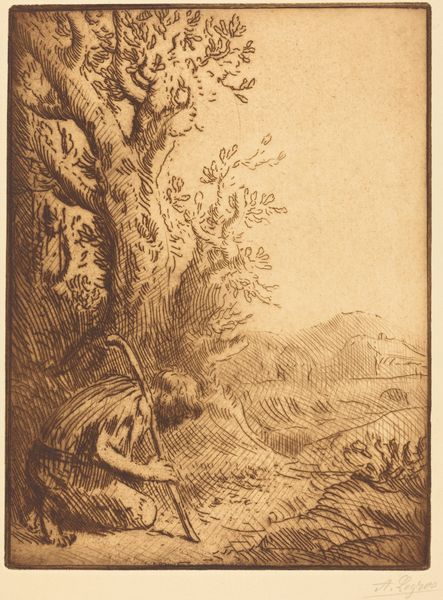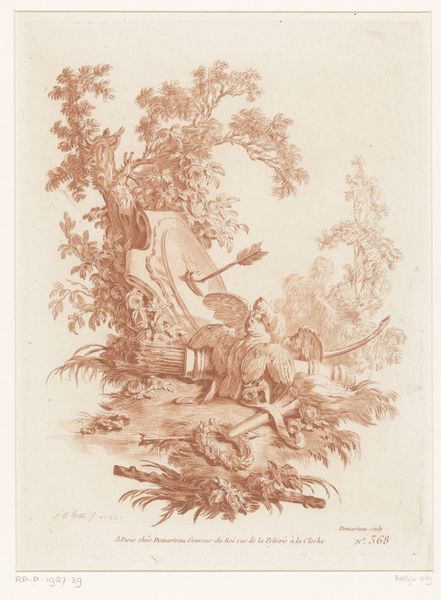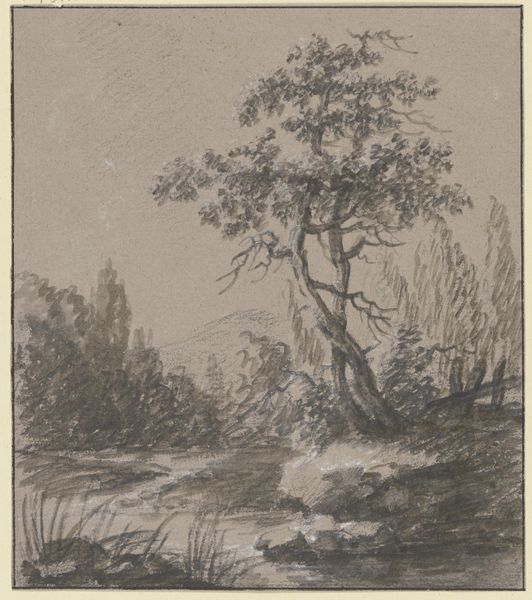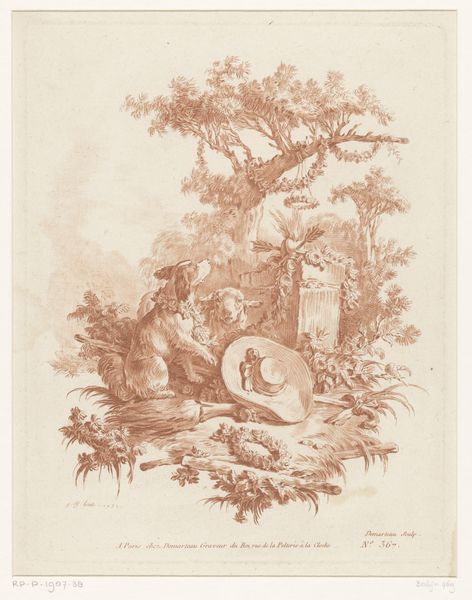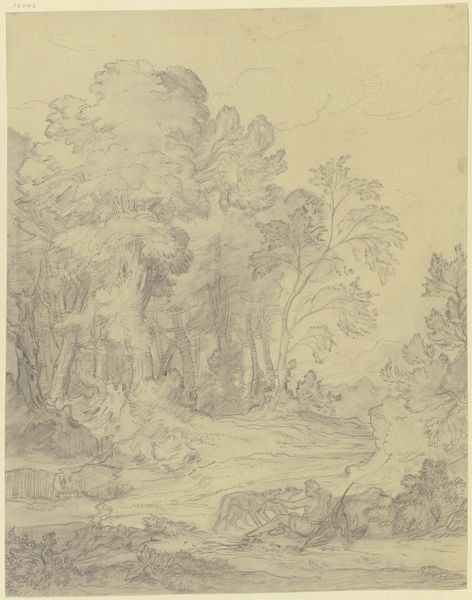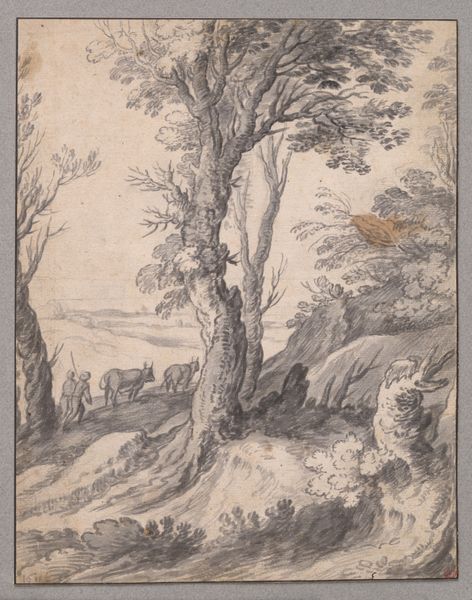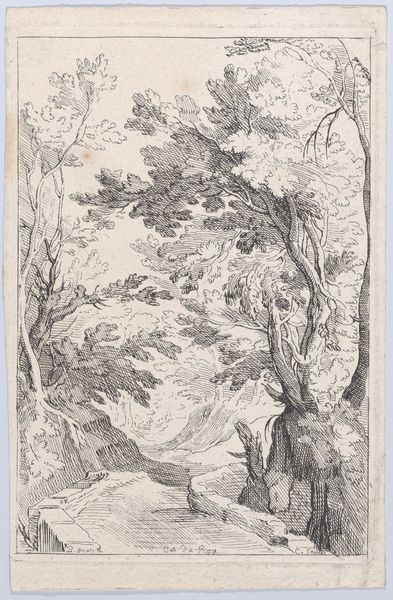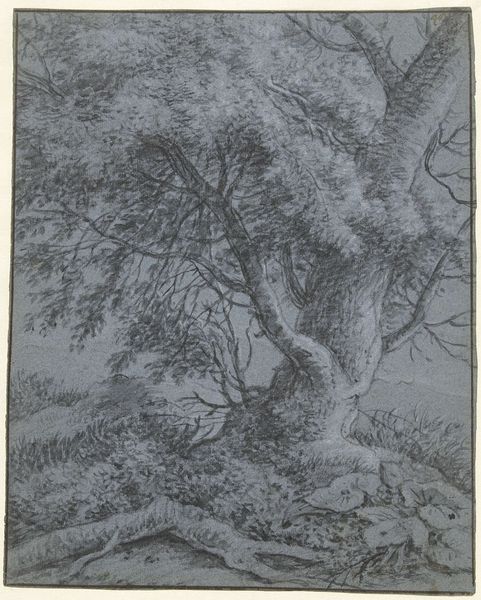
drawing, print, etching
#
drawing
# print
#
etching
#
landscape
#
etching
#
realism
Copyright: National Gallery of Art: CC0 1.0
Curator: We’re looking at "The Prodigal Son, 4th plate," an etching by Alphonse Legros. Editor: There's such a profound sense of solitude conveyed through the etching's delicate lines. It evokes a sense of both peace and despair. Curator: Legros uses etching to excellent effect here, manipulating line weight to create depth and shadow. Note how the cross-hatching around the figure grounds him within a tactile, weighty landscape. The use of shading really emphasizes the prodigal son’s weariness. Editor: It is tempting to think about who this story represents. Legros produced this work during a period of rapid industrialization, where we can read his artwork in parallel to the anxieties around social upheaval and moral decline as traditional communities shifted from agricultural settings to fast-growing cities. The man looks dejected as he’s in tune with the environment he lives in. Curator: I appreciate your interpretation! I'm particularly drawn to the formal compositional aspects, though. The diagonal placement of the figure against the dominating presence of the tree offers a stark binary: natural stability against human vulnerability. It’s a subtle dance of dark and light. The prodigal son is kneeling over something in the soil—working perhaps? Editor: Given the social and economic issues Legros himself witnessed and experienced, the act of kneeling in this context—the toil in nature—underscores an empathy towards working-class citizens’ struggles for survival as they contend with questions around class, value, and societal expectations. Curator: Interesting considerations! Ultimately, the print rewards attentive observation, its narrative emerges as a carefully crafted series of contrasts and considered lines. Editor: Precisely. The beauty of "The Prodigal Son" lies in its multiple layers of significance.
Comments
No comments
Be the first to comment and join the conversation on the ultimate creative platform.
